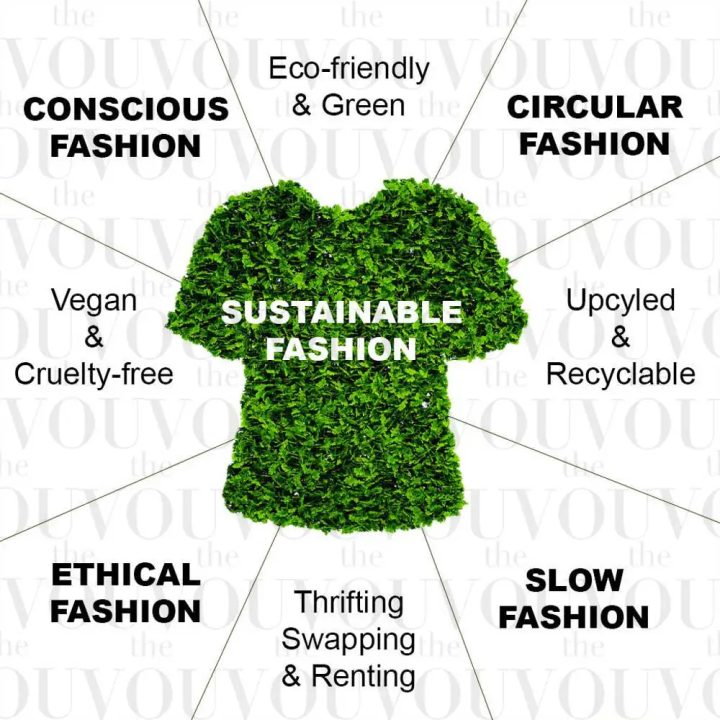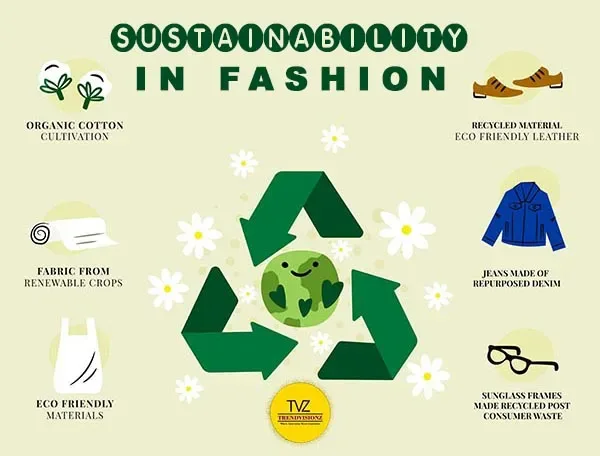Cape Town Sustainable Fashion Week: Highlighting Environment-friendly Innovations
Cape Town Sustainable Fashion Week: Highlighting Environment-friendly Innovations
Blog Article
Stay Ahead of the Curve by Checking Out Ingenious Fashion Trends
In an industry as vibrant as style, staying ahead entails greater than simply adhering to present patterns-- it demands an expedition of technology. Smart textiles, for example, are transforming garments into useful masterpieces, while 3D printing is transforming design processes with its adjustable, waste-reducing abilities. As sustainability becomes a foundation, technologies like eco-friendly materials and round fashion practices are reshaping ecological duty - Cape Town Sustainable Fashion. Moreover, the convergence of technology and style proclaims a brand-new era of customer involvement. Just how, then, can these arising patterns redefine the future of fashion, and what implications do they hold for brand names looking for to prosper in this advancing landscape?

Accepting Smart Textiles
Recently, the apparel industry has actually observed a transformative shift with the integration of wise fabrics, an advanced development that blends innovation with material. This development stands for not just a blend of aesthetic appeals and capability but also a significant jump towards sustainability and personalization in style. Smart fabrics, likewise called e-textiles, installed innovative electronics such as sensing units and conductive threads within the fabric, enabling garments to connect with the atmosphere or the user.
These fabrics are designed to keep an eye on physical specifications, such as heart rate or body temperature level, providing real-time health analytics. Past wellness applications, smart fabrics are additionally being made use of for flexible apparel, which can change color or pattern in reaction to ecological stimuli, therefore offering a vibrant fashion experience.
In addition, the growth of energy-harvesting fabrics that create power from motion or sunshine is leading the way for self-sufficient wearable modern technology. This technology is attracting ecologically mindful customers and designers aiming to reduce the eco-friendly impact of fashion. As study and advancement in this field advancement, smart fabrics are anticipated to end up being significantly common, improving the landscape of contemporary fashion with their multifunctional abilities.
The Increase of 3D Printing
Revolutionizing the production landscape, 3D printing has actually become a game-changer in the fashion business. This sophisticated modern technology has made it possible for developers to push the boundaries of imagination, producing elaborate and customized garments that were previously inconceivable. By leveraging electronic layout and additive production, 3D printing helps with the development of complex geometries and patterns, permitting designers to trying out new structures and structures.
A notable advantage of 3D printing in vogue is its capability to create on-demand, decreasing waste and lowering supply needs. This performance not only enhances manufacturing procedures but additionally permits rapid prototyping, enabling designers to bring their visions to life in a much shorter timeframe. Furthermore, 3D printing sustains modification to a level unparalleled by standard approaches, supplying unique designs and customized fits tailored to specific consumer preferences.
The surge of 3D printing has actually also equalized style, making it easily accessible to emerging developers that can now fabricate premium items without significant monetary investment in traditional manufacturing framework. As technology continues to breakthrough, the garment industry is poised to harness the full capacity of 3D printing, exploring new products and strategies that will definitely redefine how fashion is developed and produced.
Sustainable Style Advancements
As the garment industry comes to grips with the pushing requirement for environmental obligation, sustainable style developments have these details actually arised at the forefront of transformative modification. The expanding recognition of eco-friendly impact has fueled a change towards more eco-conscious methods and materials. Brands and developers are now focusing on sustainability, including approaches that decrease waste and reduce carbon footprints.
One considerable growth is the increase of circular style, which stresses recycling and upcycling to prolong the lifecycle of garments. This technique not only minimizes waste but also urges consumers to take on an extra conscious technique to clothes consumption.
An additional innovation depends on the adoption of cutting-edge dyeing strategies that utilize natural dyes or waterless procedures, therefore minimizing the huge quantities of water and chemicals commonly made use of in fabric dyeing. Moreover, innovations in biotechnology have caused the creation of lab-grown leather and fabrics, using environmentally pleasant and cruelty-free options to traditional materials. Through these introducing efforts, the apparel industry is making purposeful strides towards an extra sustainable future.

Tech-Integrated Apparel
Tech-integrated clothing stands for a groundbreaking combination of fashion and technology, reshaping just how people communicate with their apparel. This innovative domain is marked by the incorporation of wise fabrics and embedded digital elements, improving both performance and aesthetic appeal. From physical fitness trackers embedded in sports apparel to warmed coats managed via smart device apps, tech-integrated apparel provides customers unprecedented convenience and flexibility.
Introducing brands are driving this trend, concentrating on producing garments that react to environmental stimuli or individual commands. For example, some garments can change color or pattern in action to temperature level shifts, while others incorporate biometric sensing units to keep track of wellness metrics like heart price or anxiety levels. The seamless combination of modern technology into fabrics additionally encompasses environmental sustainability, with initiatives to create self-cleaning textiles or garments that adapt to weather, hence minimizing the demand for several layers.
In addition, the advent of wearable technology is not just restricted to apparel but reaches accessories like watches and eyewear, additional widening the extent of tech-integrated fashion. As the market remains to innovate, the potential for modification and customization in apparel expands, supplying customers one-of-a-kind, tech-enhanced fashion experiences that satisfy their private requirements and preferences.
Future of Virtual Fashion
In the last few years, the future of virtual fashion has become a transformative force within the sector, leveraging developments in digital innovation to redefine how fashion is produced, experienced, and taken in. By integrating increased truth (AR), online truth (VIRTUAL REALITY), and 3D layout tools, designers can now craft interactive and immersive experiences that transcend typical style borders. Online style enables the creation of garments that exist only in electronic atmospheres, providing countless opportunities for development without the limitations of physical production.
This digital change not only presents possibilities for creative expression yet likewise addresses sustainability concerns integral in traditional style techniques. Cape Town Sustainable Fashion. By over at this website getting rid of the demand for physical resources, digital style decreases waste and decreases carbon footprints. Additionally, the surge of digital style lines up with the raising consumer need for individualized and one-of-a-kind experiences, as digital garments can be tailored and customized to individual choices with convenience

Conclusion
The fashion sector's future lies in the integration of lasting methods and cutting-edge innovations - Cape Town Sustainable Fashion. Smart fabrics and tech-integrated garments are boosting capability, while 3D printing uses chances for personalization and waste reduction. Lasting fashion, with circular techniques find this and green materials, demonstrates a commitment to ecological stewardship. Furthermore, online fashion is positioned to redefine consumer interactions. Adapting to these patterns is essential for brands seeking to remain relevant and affordable in this rapidly advancing landscape.
In recent years, the style sector has actually observed a transformative shift with the assimilation of wise fabrics, a sophisticated innovation that mixes technology with textile.As the fashion market grapples with the pushing demand for environmental duty, lasting style technologies have emerged at the center of transformative change.In current years, the future of virtual style has actually emerged as a transformative force within the industry, leveraging innovations in digital modern technology to redefine how style is produced, experienced, and taken in. The rise of digital fashion lines up with the raising consumer need for personalized and special experiences, as digital garments can be personalized and tailored to individual preferences with convenience.
The style sector's future lies in the assimilation of ingenious modern technologies and sustainable methods.
Report this page